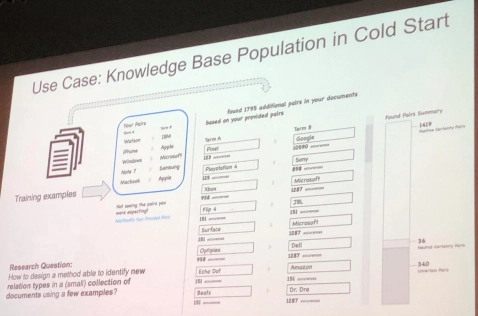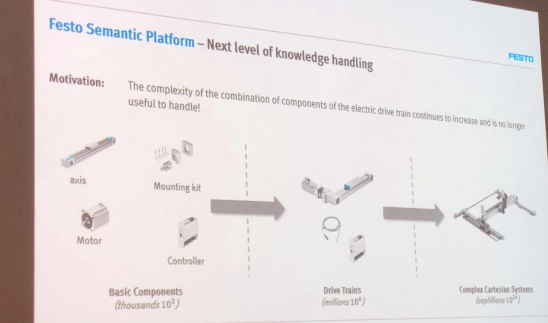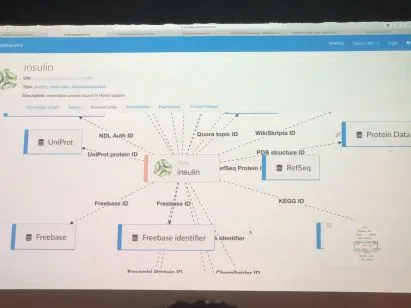Trip Report: ESWC 2019
From June 2 – 6, I had the pleasure of attending the Extended Semantic Web Conference 2019 held in Portorož, Solvenia. After ESWC, I had another semantic web visit with Axel Polleres, Sabrina Kirrane and team in Vienna. We had a great time avoiding the heat and talking about data search and other fun projects. I then paid the requisite price for all this travel and am just now getting down to emptying my notebook. Note to future self, do your trip reports at the end of the conference.
It’s been awhile since I’ve been at ESWC so it was nice to be back. The conference I think was down a bit in terms the number of attendees but the same community spirit and interesting content (check out the award winners) was there. Shout out to Miriam Fernandez and the team for making it an invigorating event:
So what was I doing there. I was presenting work at the Deep Learning for Knowledge Graph workshop on trying to see if we could answer structured (e.g. SPARQL) queries over text (paper):
The workshop itself was packed. I think there were about 30-40 people in the room. In addition to the presenting the workshop paper, I was also one of the mentors for the doctoral consortium. It was really nice to see the next up and coming students who put a lot of work into the session: a paper, a revised paper, a presentation and a poster. Victor and Maria-Esther did a fantastic job organizing this.
So what were my take-aways from the conference. I had many of the same thoughts coming out of this conference that I had when I was at the recent AKBC 2019 especially around the ideas of polyglot representation and scientific literature understanding as an important domain driver (e.g. a Predicting Entity Mentions in Scientific Literature and Mining Scholarly Data for Fine-Grained Knowledge Graph Construction. ) but there were some additional things as well.
Target Schemas
The first was a notion that I’ll term “target schemas”. Diana Maynard in her keynote talked about this. These are little conceptually focused ontologies designed specifically for the application domain. She talked about how working with domain experts to put together these little ontologies that could be the target for NLP tools was really a key part of building these domain specific analytical applications. I think this notion of simple schemas is also readily apparent in many commercial knowledge graphs.
The notion of target schemas popped up again in an excellent talk by Katherine Thornton on the use of ShEx. In particular, I would call out the introduction of an EntitySchema part of Wikidata. (e.g. Schema for Human Gene or Software Title). These provide these little target schemas that say something to the effect of “Hey if you match this kind of schema, I can use them in my application”. I think this is a really powerful development.
The third keynote by Daniel Quercia was impressive. The Good City Life project about applying data to understand cities just makes you think. You really must check it out. More to this point of target schemas, however, was the use of these little conceptual descriptions in the various maps and analytics he did. By, for example, thinking about how to define urban sounds or feelings on a walking route, his team was able to develop these fantastic and useful views of the city.
I think the next step will be to automatically generate these target schemas. There was already some work headed into that direction. One was Generating Semantic Aspects for Queries , which was about how to use document mining to select which attributes for entities one should show for an entity. Think of it as selecting what should show up in a knowledge graph entity panel. Likewise, in the talk on Latent Relational Model for Relation Extraction,

I think this notion is worth exploring more.
Feral Spreadsheets
What more can I say:
We need more here. Things like MantisTable. Data wrangling is the problem. Talking to Daniel about the data behind his maps just confirmed this problem as well.
Knowledge Graph Engineering
This was a theme that was also at AKBC – the challenge of engineering knowledge graphs. As an example, the Knowledge Graph Building workshop was packed. I really enjoyed the discussion around how to evaluate the effectiveness of data mapping languages led by Ben de Meester especially with emphasis around developer usability. The experiences shared by the team from the industrial automation from Festo were really insightful. It’s amazing to see how knowledge graphs have been used to accelerate their product development process but also the engineering effort and challenges to get there.

Likewise, Peter Haase in his audacious keynote (no slides – only a demo) showed how far we’ve come in the underlying platforms and technology to be able to create commercially useful knowledge graphs. This is really thanks to him and the other people who straddle the commercial/research line. It was neat to see the Open PHACTS style biomedical knowledge graph being built using SPARQL and api service wrappers:

However, still these kinds of wrappers need to be built, the links need to be created and more importantly the data needs to be made available. A summary of challenges:
Overall, I really enjoyed the conference. I got a chance to spend sometime with a bunch of members of the community and it’s exciting to see the continued excitement and the number of new research questions.
Random Notes
- The EU Project Networking session is pretty unique and I think an important session for ESWC.
- PROV gets used for policy enforcement.
- Hearing about the ERC directly from the EU was interesting.
- A SPARQL endpoint for Wikidata history
- An ontology for product foot-printing. Also builds on PROV-O.
- Software, Functions and semantics are coming back as a research challenge. See FunctionHub and OntoSoft.
- Chilean Legislative website powered by semtech going strong after 8 years in production.